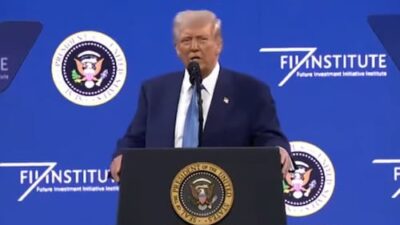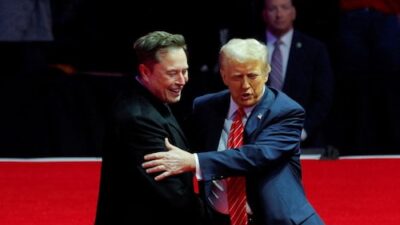David Seif, Chief Economist of Developed Markets at Nomura Securities International, argues that the “Big, Beautiful Bill” — despite widespread worries — may actually result in a slight reduction of the US deficit over the upcoming years. He emphasized the significance of potential spending cuts included in the bill and the anticipated collection of “hundreds of billions of dollars per year… in tariffs” as crucial elements.
Seif further explained that the bill does not substantially increase the deficit in relation to existing tax rates. He noted that many reports suggesting large deficit increases, sometimes estimated between $3 to $5 trillion, are inaccurate. These estimates, he explained, assume that the Trump tax cuts from his first term, which are scheduled to expire at the end of 2025, would be allowed to simply lapse. “That was never something the markets were really expecting,” Seif mentioned, indicating that the market had already factored in the continuation of these tax provisions.
The economist pointed out that the main aim of the “Big, Beautiful Bill” is to extend those expiring tax cuts rather than to introduce new ones. He also stated that the bill does not signify a “make-or-break moment” for the prospect of a fiscally conservative Trump administration. According to Seif, there’s “no huge amount of repricing” required, as the market largely anticipated that some legislative action would be taken to extend the tax cuts. “I do think it’s a bit of a false narrative to say that this bill is blowing out the deficit, because the alternative would have been a big tax increase that I just don’t think anybody was really expecting to go through,” Seif concluded.
Seif further explained that the bill does not substantially increase the deficit in relation to existing tax rates. He noted that many reports suggesting large deficit increases, sometimes estimated between $3 to $5 trillion, are inaccurate. These estimates, he explained, assume that the Trump tax cuts from his first term, which are scheduled to expire at the end of 2025, would be allowed to simply lapse. “That was never something the markets were really expecting,” Seif mentioned, indicating that the market had already factored in the continuation of these tax provisions.
The economist pointed out that the main aim of the “Big, Beautiful Bill” is to extend those expiring tax cuts rather than to introduce new ones. He also stated that the bill does not signify a “make-or-break moment” for the prospect of a fiscally conservative Trump administration. According to Seif, there’s “no huge amount of repricing” required, as the market largely anticipated that some legislative action would be taken to extend the tax cuts. “I do think it’s a bit of a false narrative to say that this bill is blowing out the deficit, because the alternative would have been a big tax increase that I just don’t think anybody was really expecting to go through,” Seif concluded.



